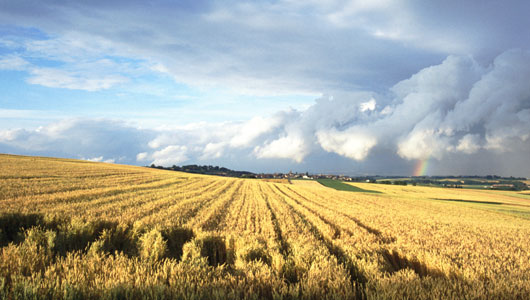Some U.S. farmers are paid to leave their land wild; others are compensated when weather devastates their cultivated land. Still others receive money when crop prices drop — all from the same federal funds set aside through the current Farm Bill.
To call it the “Farm Bill,” however, is something of a misnomer. The federal government’s primary agricultural and food policy legislation comprises hundreds of programs, which extend well beyond cows, corn and cotton to everything from food stamps and an array of environmental and public health safeguards.
“The totality is overwhelming. Nobody can grasp it,” said Marion Nestle, a professor of nutrition, food studies and public health at New York University. “This makes the Farm Bill profoundly undemocratic since the public — and, I would maintain, congressional representatives — cannot possibly understand it.”
At least now the public and their representatives will have a bit more time to wrap their heads around the bill and all its implications. Earlier this month, to the relief of many advocates concerned about the lack of transparency and what they perceive as the undue influence of the industrial agriculture lobby, the congressional super committee failed to reach an agreement on future budget cuts. This means the legislation will follow the same, more open route that it has taken every four or five years since its debut in the 1930s.
The last edition came in 2008; the House and Senate are now expected to begin debating the next iteration in 2012.
“The Farm Bill is currently up for grabs and nobody knows what will happen with it now that the budget process collapsed,” Nestle told HuffPost in an email.
For people not lucky enough to have enrolled in Nestle’s Farm Bill-focused course at NYU this fall, tools are available to help decipher the massive legislation. (The 2008 version filled nearly 700 pages.) An interactive online application created by the Johns Hopkins Bloomberg School of Public Health’s Center for a Livable Future, for example, demonstrates the relative sizes of the Farm Bill budget.
“We hope this makes it clearer how the pieces fit together,” said Roni Neff, research and policy director at the center, who helped to build the visualizer “piece by piece,” combining broader budget data from the 2008 bill with figures from the USDA.
Some of the colored rectangular chunks are noticeably smaller than others. The Supplemental Nutrition Assistance Program (formerly called food stamps) consumes about two-thirds of the budget — necessitating a button for users to “hide SNAP so more budget items are visible” (as reflected in the screenshot below).
A few more clicks and it becomes apparent that the production of fruit and vegetables receive several-fold fewer funds than commodity grains and food animals. (The lightest color blocks represent programs that primarily address their production.)
“The Farm Bill could do a lot to bolster that spending,” Neff noted.
And, according to some experts, promoting the production of fruits and vegetables would go a long way to reduce Americans’ waistlines and hospital bills.
“If we judge by its impact on human health, the American food supply is a disaster,” said Dr. Walter Willett, chair of the department of nutrition at the Harvard School of Public Health during a recent forum at Harvard. He’s particularly frustrated with the quality of food used in the SNAP program: “mostly junk and soda,” he said.
Read the rest at Huffington Post
Photo: Getty Images
